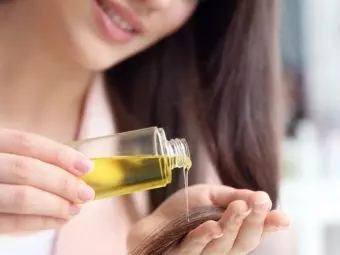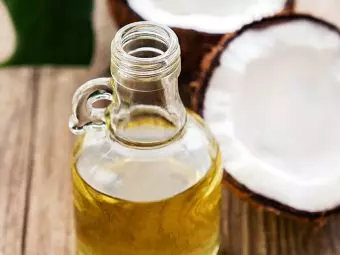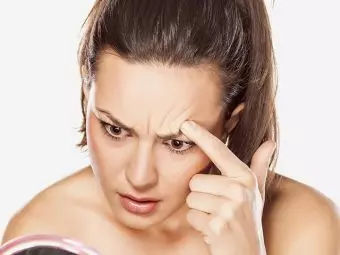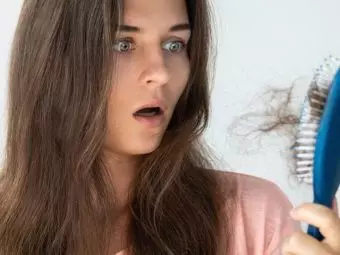Straighteners are crucial to achieving that perfect sleek straight hair. In such a case, you need to learn how to properly clean a flat iron, especially if you use it extensively. After all, a flat iron gets dirty with regular use. It may gather residue, especially if you use thermal protectors and styling products like gels, mousses, or serums. Improper care can reduce the straightener’s lifespan. This article discusses simple and effective ways to clean your flat iron. Keep reading.
In This Article
Why Should You Clean Your Flat Iron?
Flat irons gather dirt, grime, and product residue from heat protectants and styling products. So, it is essential to clean your flat iron regularly to remove all the accumulated build-up. This build-up can damage the plates over time and reduce their ability to heat up properly, thus reducing the efficiency of the tool. You can also end up with limp, greasy hair or scalp build-up.
So, it is absolutely essential that you clean your heat styling tools regularly. Keep reading to find out how to clean your flat iron properly.
How To Clean A Flat Iron
There are multiple ways to clean a flat iron using cleaning agents that you may already have at home. Scroll down to check them out!
Caution: Make sure your flat iron is switched off and unplugged before you start cleaning it.
1. How To Clean A Flat Iron With Alcohol
You Will Need
- A soft cloth
- Rubbing alcohol
Process
- Spray rubbing alcohol on the plates of the flat iron.
- Wait for 2-5 minutes for the product residue to melt and break down.
- Gently wipe the plates with a soft, damp cloth to remove all the build-up.
- Let it dry. Use as usual.
Note: Avoid using alcohol when the flat iron is hot or plugged in.
2. How To Clean A Flat Iron With Nail Polish Remover
You Will Need
- Nail polish remover
- A cotton pad
- A soft cloth
Process
- Soak the cotton pad with nail polish remover.
- Wipe the plates of the flat iron with the cotton pad.
- Wait for 2-5 minutes for the product residue to break down.
- Gently wipe the plates of the flat iron with a soft, damp cloth to remove all the dirt and grime.
- Let the flat iron dry for some time before using it again.
3. How To Clean A Flat Iron With Relaxer Cream
You Will Need
- Relaxer cream
- A damp cloth
Process
- Use the damp cloth to wipe off all the product residue and dirt from the flat iron.
- Apply a thin layer of relaxer cream on the plates of the flat iron.
- Use the damp cloth to remove the cream after 3-5 minutes.
4. How To Clean A Flat Iron Using A DIY Method
You Will Need
- An old toothbrush
- 1 tablespoon baking soda
- Vinegar
- A damp cloth
Process
- Mix 1 tablespoon of baking soda with just enough vinegar to make a thick paste.
- Apply this paste on the plates of the hair straightener.
- Wait for 2-5 minutes for the dirt and build-up to loosen.
- Gently scrub the build-up using an old toothbrush.
- Wipe the plates down with a damp cloth.
- Let the flat iron dry and use it as usual.
The best way to ensure you don’t accumulate product build-up on the flat iron is to clean it regularly. Find out how in the section below.
Best Way To Clean A Flat Iron: Daily Maintenance
The simplest and most hassle-free way to clean your hair straightener regularly is to use a soft, damp cloth to wipe off the excess residue.
You Will Need
- Drinking water (make sure that it is not hard water as this can cause additional build-up on the flat iron)
- A soft cloth
- A cotton pad
Process
- Heat up your flat iron at the lowest setting.
- Switch it off and unplug it.
- Use a damp cloth to wipe off all the product residue and dirt.
- Wipe the plates down with a cotton pad to remove any trace of dirt or moisture.
Pro-tip: Use Q-tips to clean those hard-to-reach edges.
Wondering how often to clean your hair straighteners? Keep reading to find out!
When Should You Clean Your Flat Iron?
You should clean your flat iron when:
- You notice any product residue on the plates.
- The iron starts taking longer to heat up.
- Your hair starts looking dull, limp, or greasy right after straightening it.
- You start experiencing itching and product build-up on your scalp.
- A burning smell starts emanating from the plates due to the melting of the product build-up.
You can clean your flat iron daily with a damp cloth or simply wipe the plates down once a week with a wet wipe. However, it is best to deep clean it once a month for the best results.
If you use flat iron extensively, there are high chances of product build-up on its surface. Knowing how to clean a flat iron increases the span of the straightener and helps in getting perfect hair without leaving any residue on the hair. You can clean your flat iron with nail polish remover, rubbing alcohol, relaxer cream, or baking soda and vinegar paste. You can also clean it with a damp cloth regularly. You should clean the straightener when you see a product build-up or if the plates are taking too long.
Frequently Asked Questions
Why does my hair smell burnt when I flat iron it?
Your hair might smell burnt while using a flat iron because of product residue that is getting burnt. Or it could be because of hair damage due to heat. Heat is generally bad for hair. Therefore, be careful with the temperature – start with the lowest possible temperature.
Can I use hydrogen peroxide to clean my flat iron?
Yes. A mixture of baking soda and hydrogen peroxide is used as a homemade solution to clean flat irons.
Can you remove rust from flat iron?
Yes. You may use vinegar to remove rust and water stains from flat irons. Use cotton swabs to dab the vinegar on the rust to break it down, and gently scrub with steel wool to remove residual stains. However, be careful not to use too much vinegar that could seep into the iron’s electric parts and ruin it.
Subscribe
Key Takeaways
- Flat irons need to be cleaned regularly as the build-up of hair products on them can damage the plates and reduce their efficiency.
- You can clean a flat iron with alcohol, nail polish remover, relaxer cream, or vinegar.
- Clean your flat irons once a week if you use them frequently, or deep clean them once a month.
Related
The following two tabs change content below.
- Author
Annie Jangam
Annie Jangam is a researcher-turned-content writer. She enjoys dissecting complex clinical studies and shuffling through the scientific jargon to make… more



 How To Use Jamaican Black Castor Oil For Hair Growth
How To Use Jamaican Black Castor Oil For Hair Growth How To Exfoliate Your Scalp At Home To Clear Excess Oil
How To Exfoliate Your Scalp At Home To Clear Excess Oil How To Apply Oil On Hair: A Step-By-Step Guide
How To Apply Oil On Hair: A Step-By-Step Guide How To Use Coconut Oil For Dry Scalp And Dandruff
How To Use Coconut Oil For Dry Scalp And Dandruff Easy Way To Get The Perfect Twist Out On 4C Natural Hair
Easy Way To Get The Perfect Twist Out On 4C Natural Hair Eyebrow Hair Loss: Causes, Prevention Tips, & DIY Methods
Eyebrow Hair Loss: Causes, Prevention Tips, & DIY Methods Types Of Hair Loss, Causes, Treatments, & Prevention Options
Types Of Hair Loss, Causes, Treatments, & Prevention Options Itchy Scalp And Hair Loss: How To Treat And How To Prevent It
Itchy Scalp And Hair Loss: How To Treat And How To Prevent It What Is Hair Texturizing? How To Take Care Of Texturized Hair?
What Is Hair Texturizing? How To Take Care Of Texturized Hair?